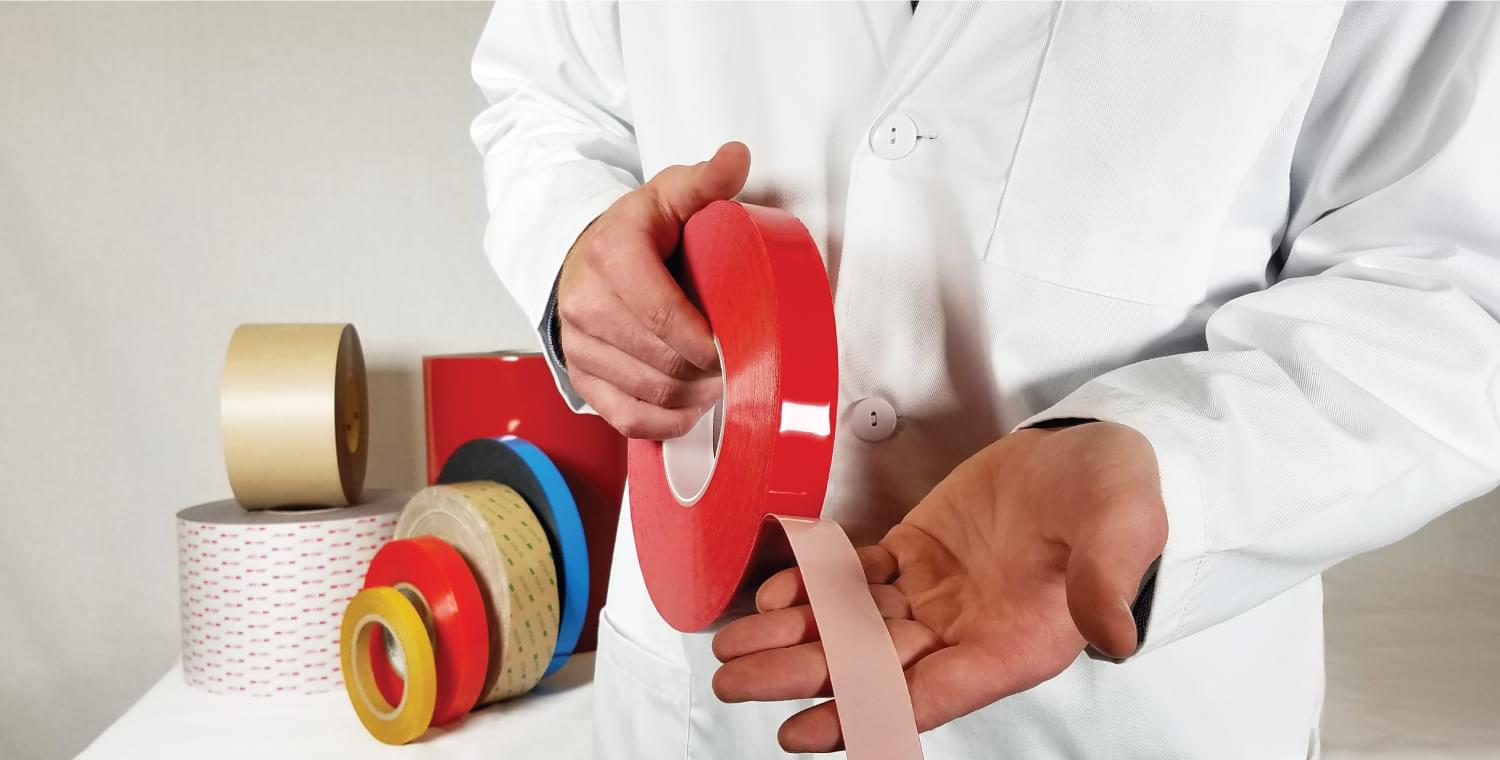If your product uses an adhesive-backed (commonly referred to as stick-on) hook and loop fastener, there are three key factors to consider in selecting the right adhesive for the application.
Be sure you’re making informed decisions.
To the untrained eye, all adhesive-backed hook and loop fasteners may seem the same: Just peel, stick and go. However, the type of adhesive backing you go with can significantly impact the fastener’s performance. Choose wisely and the fastener will maintain its adhesion and performance over the product’s lifetime. Choose poorly and you’ll get a fastener that fails early if it even sticks at all.
Choose wisely and the fastener will perform well. Choose poorly and you’ll get a fastener that fails early, if it even sticks at all.
For some product applications, such as retail signage or trade show graphics, the choice of fastener and adhesive type is less critical and can be made later in the product design process. For others, such as medical devices or automotive and aerospace components, the fastener is a key element of the product’s design. If the adhesive fails, the entire product fails. The choice of adhesive for applications like these should be made as early in the product design process as possible.
Here are three important questions to ask when specifying your next adhesive-backed hook and loop fastener.
- What is the Substrate Material?
- Where Will the Fastener Be Used?
- What Is the Desired Lifetime of the Product?
Let’s explore these further:
- What is the Substrate Material?
Acrylic adhesives work best with flexible vinyl and substrates containing plasticizers, while rubber adhesives work best with paper, wood, and unpainted metal substrates.
Some substrates, such as low-surface-energy plastics or powder-coated metals, are harder to adhere to than others. For these applications (e.g. painted display racks, bicycles, smartphone covers), a special type of adhesive will offer advantages over rubber and acrylic adhesives.
Some substrates are harder to adhere to than others. For these applications, a special type of adhesive may be required.
- Where Will the Fastener Be Used?
Will the product be used indoors or outdoors? Will it be exposed to high humidity or UV rays? Will it have contact with human skin? Is flammability a concern?
Generally speaking, acrylic adhesives are superior to rubber adhesives for products used in environments where temperatures can soar, like a toll payment device mounted to the inside of a vehicle’s windshield. Specially formulated flame retardant adhesives are required to meet OEM and governmental specifications for applications in the automotive and aerospace industries.
Acrylic adhesives are superior to rubber adhesives in environments where temperatures can soar.
For adhesive-backed fasteners used in medical devices, look for REACH, RoHS and CAL-PROP 65 certified adhesives that leave little to no residue when removed.
- What Is the Desired Lifetime of the Product?
Is the product designed to be disposable, or does it need to last for years? How many open-and-close cycles will it go through? These issues will drive the amount, placement, and type of adhesive.
For most products with a shorter designed life cycle or minimal open-and-close cycles, a rubber adhesive is typically desirable and cost-effective. A product designed to be used for a longer period, and that will be opened and closed multiple times a day (e.g. garments, orthopedic braces, other medical devices), would be better served with an acrylic adhesive, which tends to be stronger than rubber. The goal is to avoid the product failure that occurs when the hook-to-loop engagement becomes stronger than the adhesive.
Product failure can occur when the hook-to-loop engagement becomes stronger than the adhesive.
In some cases (e.g. tents and other fabric architecture products), an adhesive backing is incorporated into a hook and loop fastener to hold the fastener to a material so it can be sewn down. Open-and-close cycles aren’t an issue here. However, the choice of adhesive type and the placement of the adhesive can have an effect on your production process since improperly placed adhesives can stick to the needle and gum up the machinery.
| Properties | Rubber | Acrylic |
| Initial adhesion | High | Moderate |
| Adhesion build-up | Quick | Gradual |
| Shear strength | Fair | High |
| Temperature resistance | Moderate | High |
| Solvent resistance | Fair | Fair |
| UV resistance | Low | High |
Start with a Sample
The best way to determine which type of adhesive-backed fastener is right for your product is to try some samples from your hook and loop fastener supplier. Halco provides both adhesives that are pre-coated on the hook and loop material and custom lamination services using pressure sensitive adhesives from major manufacturers like 3M. Testing your product prototype prior to full-scale production is crucial. The adhesive-backed fastener should be tested, both in the lab and under real-world conditions, to ensure the adhesive bond can be maintained throughout the product lifecycle.
Testing a prototype prior to full-scale production is crucial.
Want to learn more about selecting the right adhesive-backed hook and loop fastener for your next project? Request our Adhesive Fasteners sample kit or call 877-532-1561 to speak with one of our adhesive experts. We’re ready to work with you!

